ZACH PEARL

NEWS/NOTES
WORKING THE GLITCH
June 2025
I'm pleased to share that my latest paper, co-authored with the ever insightful Heather A. Love, has been conditionally accepted for publication before the end of the year in Imaginations: Journal of Cross-Cultural Image Studies, published by University of Alberta. This is for a special double-issue on "(Re)Imagingin AI Interventions" in the context of creative labour.
In our paper, "Working the Glitch: Embracing Error and Intraaction in AI-Assisted Artmaking," Dr. Love and I propose
a radical shift away from the goal of increasing accuracy in generative AI for the benefit of creative applications in fine art, where moments of glitch and failure are crucial to spurring new formal approaches and discovery-led processes.
Here is an excerpt fromo the abstract:
In this article, we argue for the necessity of preserving possibilities for glitch and negative feedback in the programming of AI interfaces, particularly in those designed for visual cultural production. Drawing upon concepts from modernist literature, cybernetics, and media theory, we mount a case for the validity—and, indeed, the desirability—of AI that is intrinsically flawed, indeterminate, and effectively “useless” in the techno-deterministic sense, producing more gaps in meaning than resolutions, and therefore engendering rich spaces of close-reading and interpretation. We employ a new materialist, onto-epistemological framework, informed by the work of Karen Barad, Elizabeth Grosz, and Nigel Ash, to explore how moments of glitch and distributed agency can move us beyond the serendipity of “happy accidents” to constitute meaningful human and non-human intra-action, shaping a given text and its author in a reciprocal more-than-human becoming.
New Illustration Series
April 2025
I've started a new series of illustration works that will eventually be offered as greeting cards and high-quality inkjet prints. Each is an adaptation of artwork from adult colouring-book pages which I then draw over and into, using a mixture of pen, ink wash, coloured pencil and pigment liner. Once the series is complete, I'll be selling the 5 x 7 in. originals.
See the larger versions on the art page.
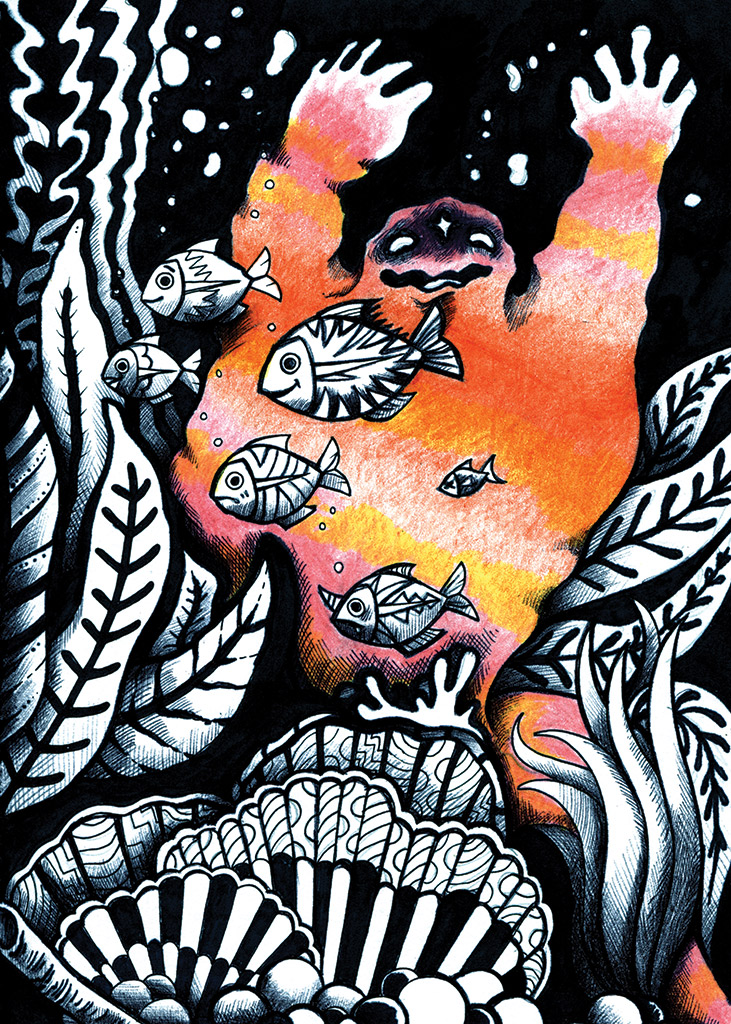
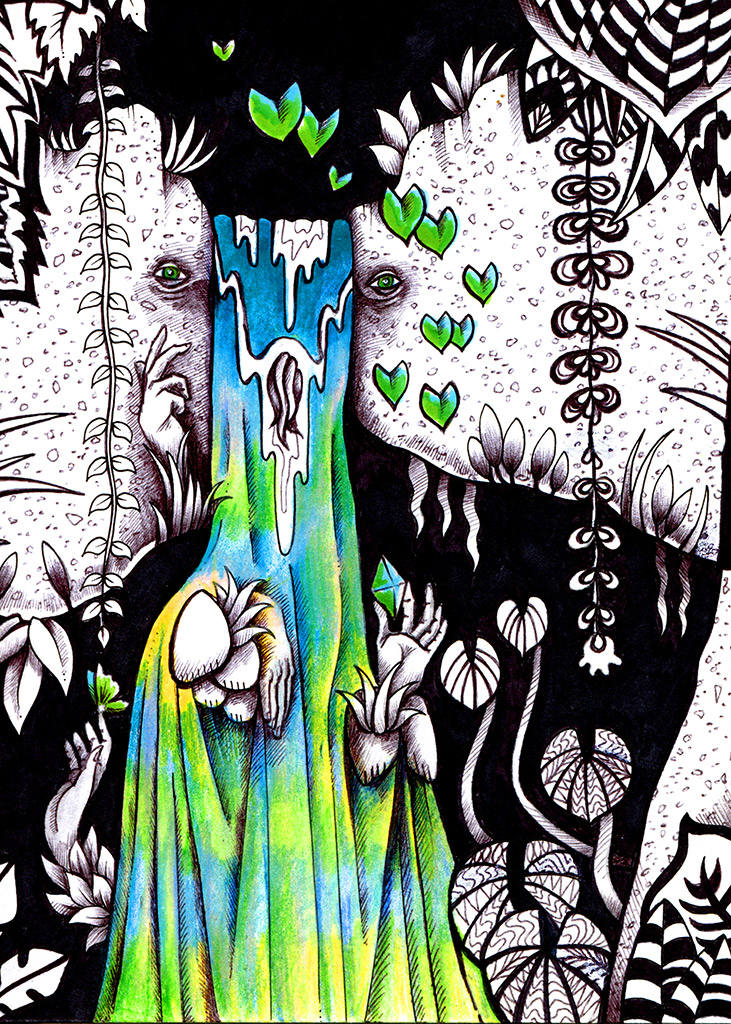
Spring Cleaning the Hard Drive
April 2024
Just looking back through old projects—mostly that died on the vine. This is the logotype from an abandoned card-based game project. I just really like how the illustrative elements feel at home. When I was in my twenties it was a real struggle to get type and image to mesh, so this is a tiny victory of digital ephemera.

Back on the FaceType Train...
December 2023
After an unintended hiatus, I've started working on the FaceType typeface again and am now over halfway through the alphabet. In the interim, I've also decided to make this project into a book with fictocritical 'missives' for each letterform. Hoping to have a finished layout and publisher pitch before the end of this year.
In the meantime, enjoy a whole whack of new letters on the dedicated project page—L, M, N, O, and P. Here are a couple teasers:
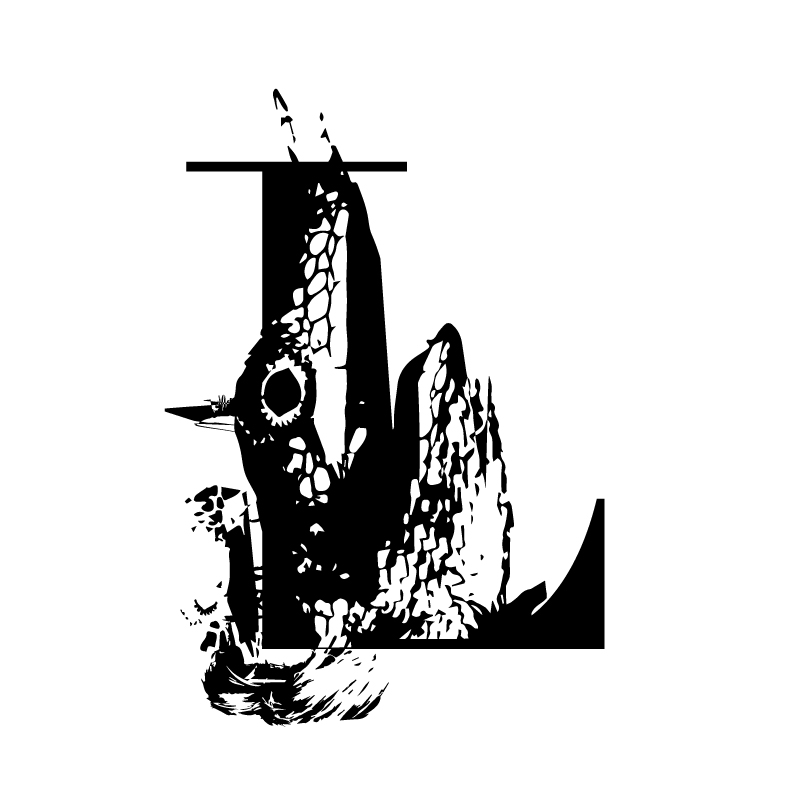
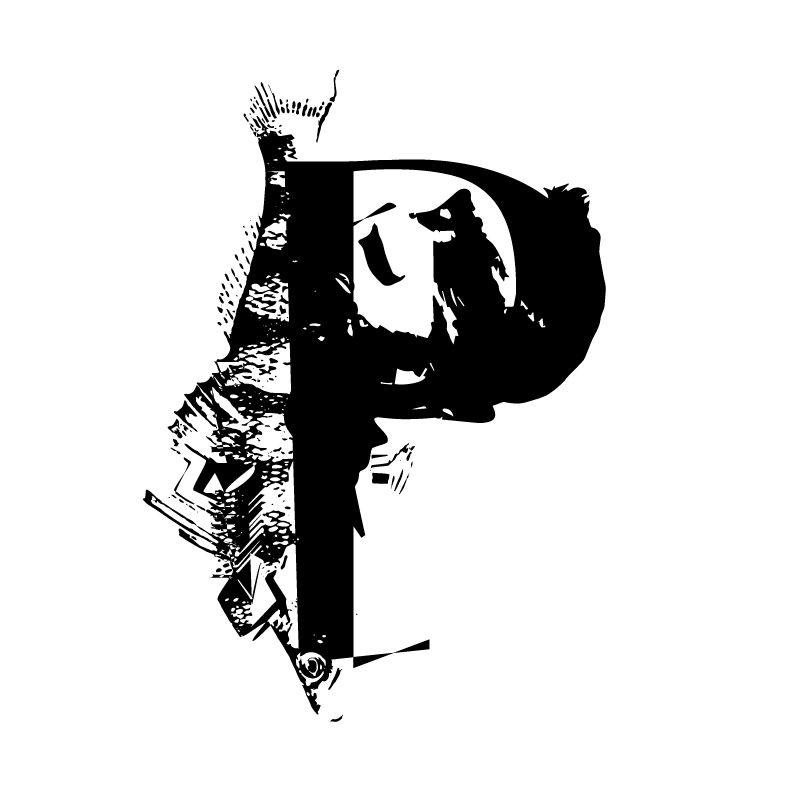
My First Book Chapter
November 2023
I recently received some wonderful news that my proposal has been accepted to write a fictocritical book chapter in the forthcoming anthology The Need to Rename Tech, edited by Crystal Choshki, Asst. Professor of Communications at Mount Royal University, and Robin Mansell, Professor Emeritus at the London School of Economics and Political Science.
My chapter will propose—through a variety of fictocritical-poetical methods—to get rid of the word "Internet" and replace it with "the stream" to a) acknowledge and edify, in language, how deeply entangled our networked digital media is with the media of the earth, air, and oceans, and b) to think through the phenomenology of navigating virtual technologies in an embodied way—wading in, splashing around, and seeing to the bottom, as well as the perhaps futile notion of getting out of said stream.
More to come on this in the Spring...
"Feminist Digital Ecology" in the latest issue of Configurations
September 2023
After a literal trip around the sun, I'm over the moon to share that my article "Feminist Digital Ecology: Mimesis, Fictocriticism, and Altering Technological Space," has just been published in the Summer quarterly of Configurations produced by John Hopkins University Press and the Society for Literature, Science, and the Arts.
This is the last of the chapters to be adapted from my dissertation, Fictocritical Cyberfeminism, and explores how Canadian fictocritical writers in the late 1980s and early 90s were re-envisioning the boundaries and the possibilities of digital media as they were rapidly developing through narratives of highly networked and entangled landscapes.
You can read more on my Academia.edu profile.
New Fictocritical Text in Multidisciplinary Online Exhibition
March 2022
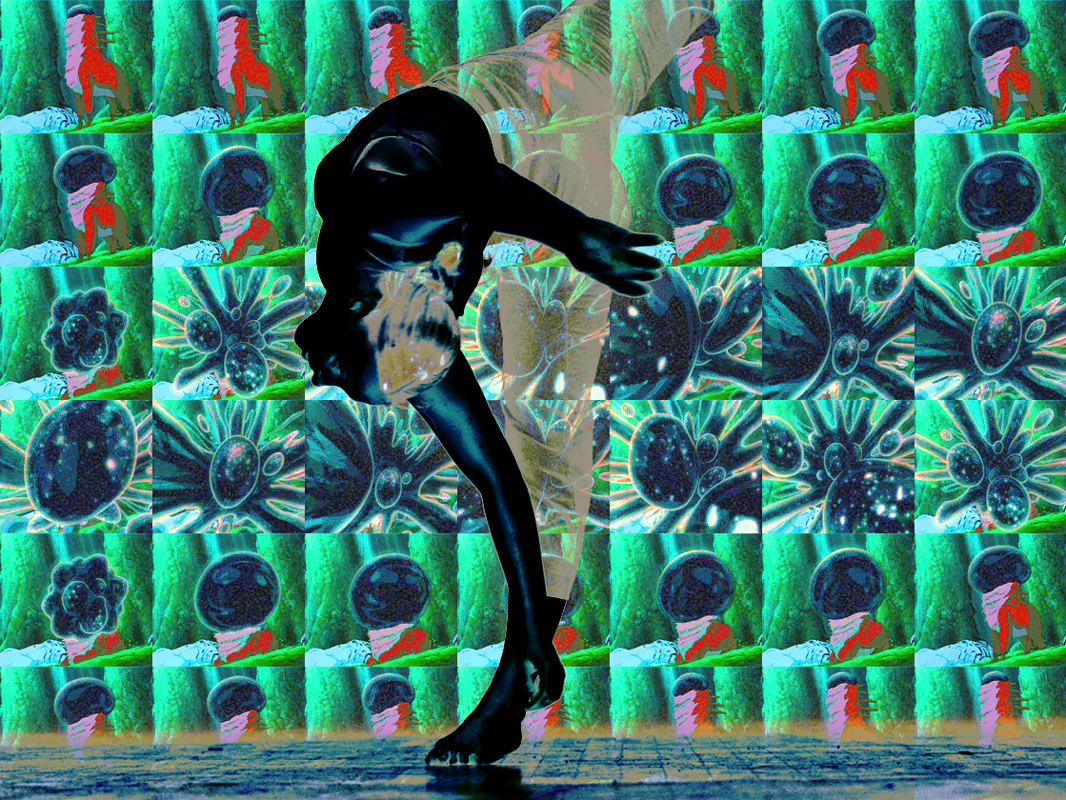
"Up on the Toe (Unbuilding a Body v.1.0)"
My most experimental fictocritical text yet was accepted to premiere as part of the "After Progress" online exhibition. This virtual repository gathers artworks, essays, research documentation and poetry into a single and interactive digital space. Very honoured to be a part of it.
My own piece focuses on the notion of progress through the lens of techne and the associated idea that human nature is technological. How do we come to terms with our need to extend ourselves through external media? How do we reconceive progress and futurity?
You can read the piece here.
Facetype: A Font for Cyberfeminists
February 2022
I'm embarking on a new research-creation project inspired by some experiments I did while developing a new assignment for my graphic design students.
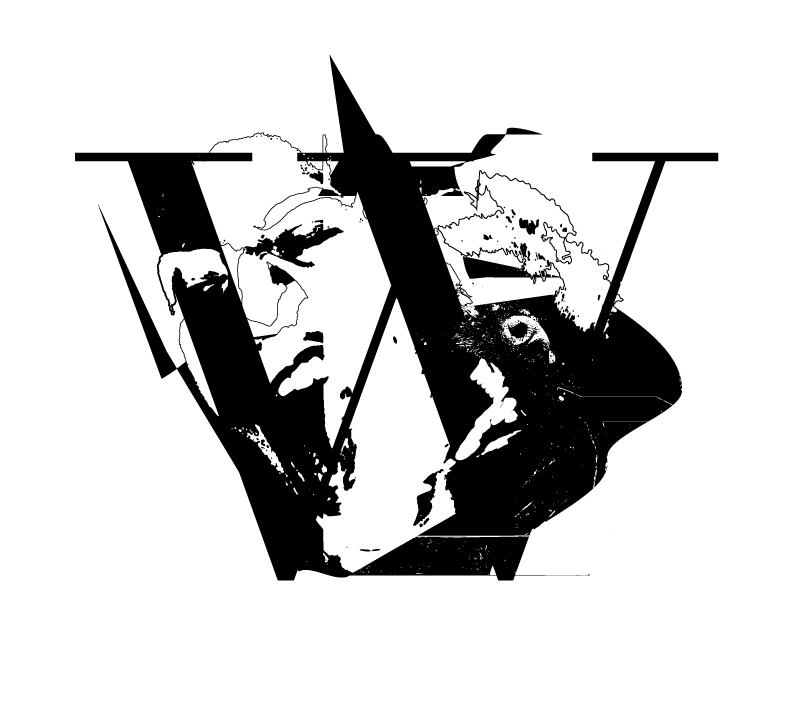 Facetype is a font generated through a semi-algorithmic process of image translation and automated graphics generation using features in Adobe Illustrator, notably blending layers, rasterization and auto-tracing. Each letterform combines imagery of human faces and non-human faces, be they plant, animal or fungal. After the imagery is processed, I go in at the anchor-level and manipulate the vectors to further distort or bring clarity to select areas.
Facetype is a font generated through a semi-algorithmic process of image translation and automated graphics generation using features in Adobe Illustrator, notably blending layers, rasterization and auto-tracing. Each letterform combines imagery of human faces and non-human faces, be they plant, animal or fungal. After the imagery is processed, I go in at the anchor-level and manipulate the vectors to further distort or bring clarity to select areas.
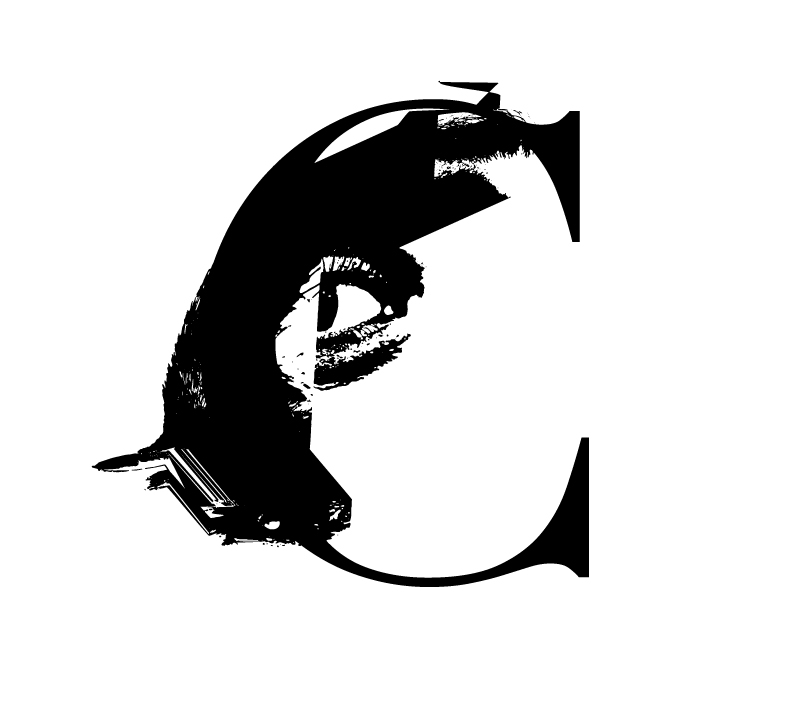
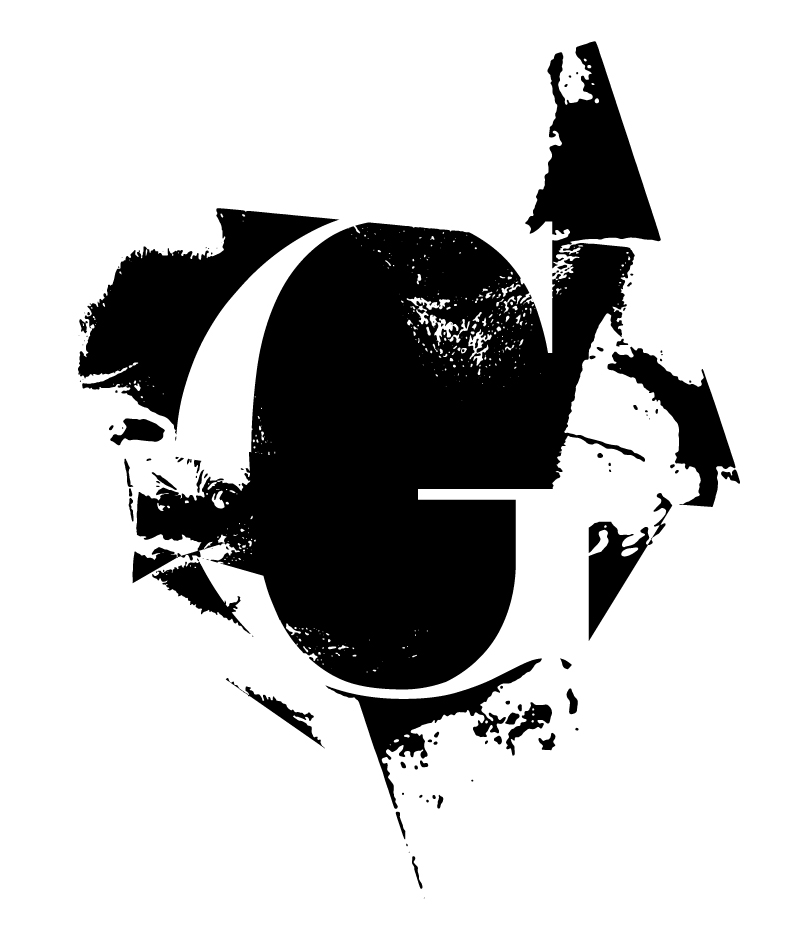 I will be posting each new letter as I make it to the project's page in the design section, with the hopes to have some fully developed type specimens to share by summer.
I will be posting each new letter as I make it to the project's page in the design section, with the hopes to have some fully developed type specimens to share by summer.
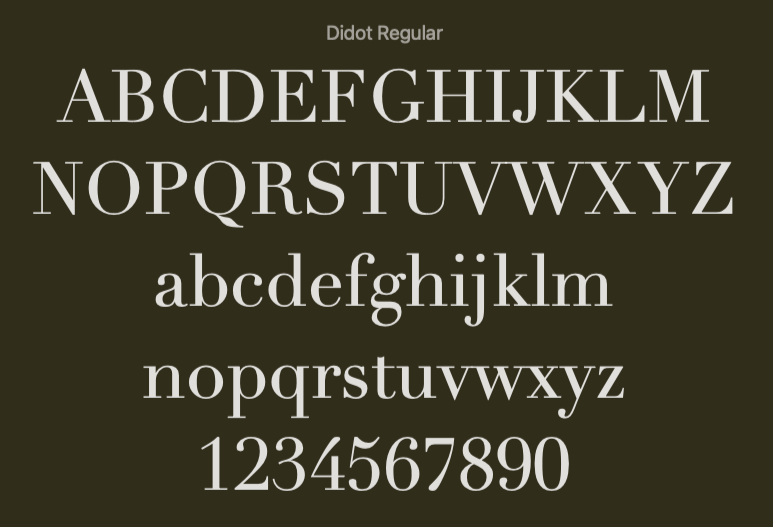
I chose to work with Didot for this project because of its label as a "modernist humanist" typeface, embodying what many consider to be the pinnacle of Enlightenment age thinking. However, as many feminist scholars have noted, including Iragaray, Haraway, Grosz, Braidotti and others, modernity and the brand of humanist ideology it promotes is based in binary opposition and false objectivity leading to systemic inequality. By using Didot as the basis for Facetype, my font graphs the productive tension when those oppositions collapse and the humanist aesthetic adapts to a posthumanist visual lexicon.
New article in open library of humanities special collection
January 2022
"Brandon is a Network Not a Name: Fictocriticism & the Cyberfeminist Art of Shu Lea Cheang"
I have a new journal article as part of the OLH's special Collection "Binary Modernisms: Re/Appropriations of Modernist Art in the Digital Age". It draws heavily on my dissertation research, looking at the overlaps between the tactics of fictocritical writing and cyberfeminist art to suggest that they share a central tenet of indeterminacy, and that this indeterminacy disrupts essential binarisms in modernist narratives of technology and progress.
Open Library of Humanities is open-access, so you can get the full text below:
Pearl, Z., (2022) “Brandon is a Network Not a Name: Fictocriticism & the Cyberfeminist Art of Shu Lea Cheang”, Open Library of Humanities 8(1). doi:10.16995/olh.6391
NEW PUBLICATION: CYBERNETICS & contemporary art
September 2021
"The lasting influence of Cybernetics in Contemporary Art; theory into praxis"
I just published a paper-presentation that I gave as part of the 2021 IEEE Conference on Norbert Wiener in the 21st Century last July, hosted virtually by Anna University in Chennai, India. In it, I argue that unlike in other disciplines, the influence of cybernetics has remained critical in contemporary art practice, where information and communication are often treated as material processes rather than numbers or theorems. I also highlight the role of performance art in 1970s, particulary by women artists like Joan Jonas and Laurie Anderson, in illustrating how identity and gender are recursive, feedback-driven systems of representation.
Z. Pearl, "The lasting influence of Cybernetics in Contemporary Art; theory into praxis," 2021 IEEE Conference on Norbert Wiener in the 21st Century (21CW), 2021, pp. 1-5, doi: 10.1109/21CW48944.2021.9532580
consciously incoherent: anti-aesthetics & associational networks in ‘fractured horizon—a view from the body’
June 2021

My second review with Peripheral Review is now up on their site. This piece was almost a year in the making, and I'm so thankful to have worked with such an open-minded and collaborative editor, Lauren Lavery.
The aporia of the bodiless transcendence in Black’s piece suggests a body is always more than one thing, or one form—plural and polysemous—and that bodies are implicated in every act of communication, whether depicted or not. Sensing this and reckoning with it, however, is not something that comes easily without a face, a hand, a hairdo, or a skin colour to scaffold our conventional interpretations.
Read the full piece, here.
IMAGE CREDIT: Still from My Bodies, 2014 by Hannah Black. Courtesy of the artist.
SPECIAL PANEL ON ART & CYBERNETICS AT SSIT 21CW
January 2021
I've been asked to organize and participate in a special panel session on "Art and Cybernetics" at the 3rd Conference on Norbert Wiener in the 21st Century: Being Human in a Global Village, set to be held at/via Anna University in Chennai, India this July 22-25.
This is a conference put on by the Society for the Social Implications of Technology (SSIT), a branch of the Institute of Electrical and Electronics Engineers (IEEE).
To my understanding, this is a first for the conference, and it's an important opportunity for artists and artist-academics to speak directly to engineers and social scientists about the role of the arts in the history of technological development.
More details to follow...
THE EMBODIED USER
December 2020
This is a 2-part video lecture that I put together recently for my upcoming Graphic Design 2 class, which thematically engages issues of computation. In developing the course content collaboratively with other instructors, I was tasked with creating a module that could either be the start or the finish of the course. So, I took that as an opportunity to introduce some media theory :D
Specifically, I weave in Paul Dourish's concept of embodied interactions to explore phenomenological approaches in designing digital media.
Then, in part two, I turn to Luchy Suchman's notion of situated actions and how auto-ethnography can support the iterative process of design thinking.
INTERACTIVE ILLUSTRATION w/ PROCESSING
June 2020
Right now, I'm squarely in the jaws of teaching an interactive media course (basically, intro to web design) in an ONLINE ONLY format because... pandemic---the irony is epic.
But, one of the best things about teaching this course, and coding in general, is that it forces me to freshen up my skills and reflect on what I'm doing otherwise, in other media. Processing has always been something that I've tinkered with—enough to know how to teach the basics. But, perhaps shockingly, I've never really used it to make my own work interactive. [blind spots, right??]
So finally, here's some video of a work in progress using old sketchbook drawings and some random math to flicker the opacity of the cursor so the user can draw 'stars' at different opacities in a continuous stream...it's on its way to somewhere...
SCHOLARSHIP AWARDS
May 2020
Without tooting my horn too loudly, I thought it would be good to announce here that I recently found out I've been awarded the Ontario Graduate Scholarship (OGS) as well as the University of Waterloo's President's Graduate Scholarship. Both awards are based on the merit of the dissertation research proposal. The OGS award is a 1 in 3000 ratio, or a 0.3% chance of acceptance.
This is incredibly validating, because my specific research topic—fictocriticism—is, at best, a marginal area of literature and literary criticism. My dissertation research makes the case that this experimental method of writing is also intimately bound up with the history of digital media and networked communication culture. I genuinely feel a little more motivated to do this research now knowing that the province sees value in...enough to put $ behind it.
Break-and-Enter: On the Exhibition Undomesticated
January 2020
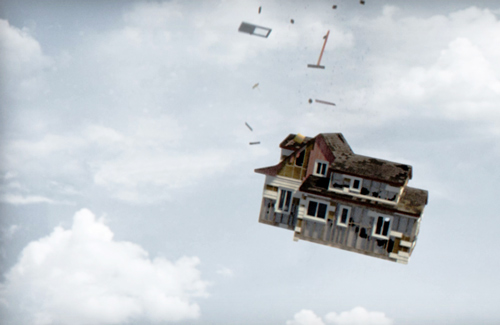
I published my first fictocritical exhibition review on the expansive and unsettling group exhibition Undomesticated at Koffler Gallery @ Artscape Youngplace, in Toronto.
Read an excerpt, in the writing section, or
Check out the full-length version, in Peripheral Review.
Image: Gwenaël Bélanger, Breakdown, 2008-2013, Animated 3-D video, 4:01 minutes.
The Gift of Bread and The Problem of Having Pets
June 2019
I contributed two fictocritical texts for the last exhibition at the current location of Loop Gallery in Toronto. You can find them on their blog:
The Problem of Having Pets:
A Response to the Artwork of KimystreeLoves
The Gift of Bread:
A Response to Recipes From Auschwitz (2019) by Thelma Rosner
Experimental essays for Loop Gallery (Toronto)
April 2019
This June, I'll be contributing parallel fictocritical texts for the final show at Loop Gallery in its current location—at the corners of Dundas and Dovercourt in Toronto. Local(ish) artists Thelma Rosner and Kim Stanford will be showing recent and 'revived' work, and I will be threading theoretical connnections betweem them using a loose, fictional narrative—perhaps about growing heirloom tomatoes...more to come soon...
Ladybird Bug Boy Out Now
November 2018
It's real—I can squeeze it in my hands and cut my fingers on the freshly guillotined paper. Limited edition of 115, published by Vallum Society for Education in Arts and Letters (Montreal).
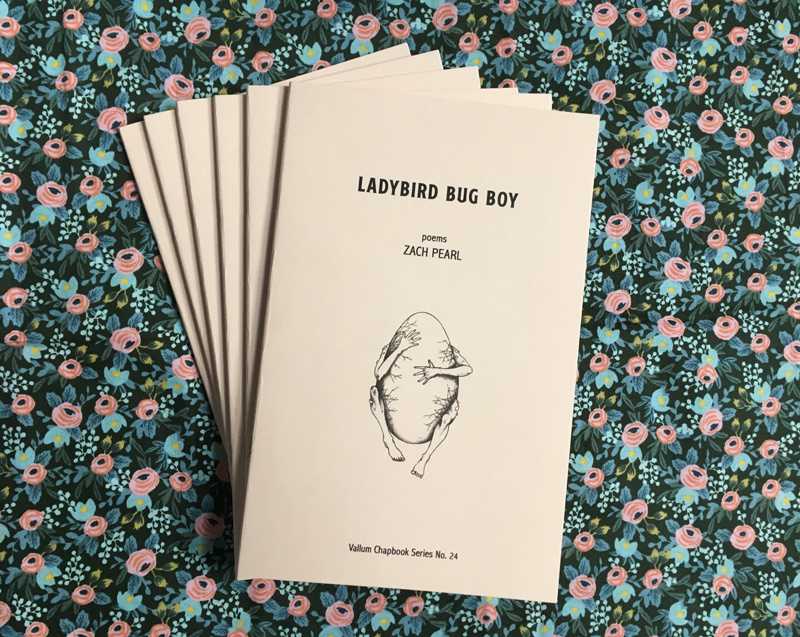
You can purchase a copy here for $10 CAN.
Interview on the Vallum Blog
29 August 2018
I recently did an interview with Rosie Long Decter for Vallum's blog about my forthcoming collection, Ladybird Bug Boy.
Here's a brief excerpt:
RLD: I also found the ghosts highlight how stories are connected or inherited—another person’s story can haunt our own. One of the “legitimate” ghosts in the collection is Mary Shelley, who has a whole poem about her. Frankenstein also makes an appearance in a later poem. Why Mary and Frankenstein? Monsters, ghosts, bugs—is it fair to say your work is interested in the non-human?
ZP: Yes, it’s more than fair to say that I’m interested in the non-human. A lot of my research looking at art and technology has dealt with the concept of posthumanism. Although the term can mean many things, I’m referencing the philosophy of defining human experience in constant relation to non-human forms of life, whether these are plants and animals or machines. This is also the main tenet of “radical ecology”. In either case, I’m just into connectedness and I’ve read too much Donna Haraway.
Vallum 15:2 The Chase & Ideas Digital Forum
August 2018
To promote the release of my fortchoming chapbook, Ladybird Bug Boy, the fall issue of Vallum Magazine will include two poems from the collection—golem and swans. You can read more about that upcoming issue at VallumMag.com.
In other news: I was also recently invited by the Ontario Association of Art Galleries (OAAG) to present some of my research on online exhibitions and exhibition making post-Internet at the Ideas Digital Forum on October 12th and 13th. Held at the Robert McLaughlin Gallery in Oshawa, just east of Toronto, this two-day event is exploring how public galleries and museums need to evolve to support digital art practice. You can see more and register on their website.
New Poem Added to the 'Writing' Section
June 2018
Thanks once again to Vallum Magazine for publishing my poem buzzing in their most recent issue, 15:1 "MEMORY & LOSS". You can read it here.
The Vallum Chapbook Award 2018
June 2018
I'm thrilled to announce that I won the annual chapbook competition hosted by Vallum Magazine for my manuscript Ladybird Bug Boy! A small but tight-knit collection of seventeen poems, Ladybird Bug Boy was written over the last year and details my efforts to bridge my teenage and 30-something identities as well as negotating incessant digital media and walking the borderline between urban and rural life.
More to come on this soon: I'll be posting select poems from the chapbook each month until it's launch starting in July.
Universities Art Association of Canada Conference
MAY 2018
I'll be presenting some of my curatorial research as part of a roundtable session moderated by the lovely Dr. Barbara Rauch at this year's UAAC Conference at University of Waterloo. Our session is titled Transformation of the Artist's Studio and myself, Daniel Pillis and Curt Cloninger will all be discussing/debating how the notion of studio practice has changed in the post-digital age. You can read more about the conference here.